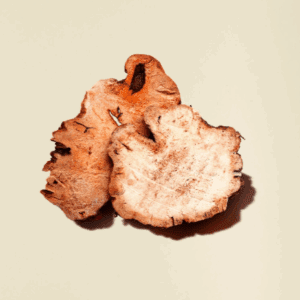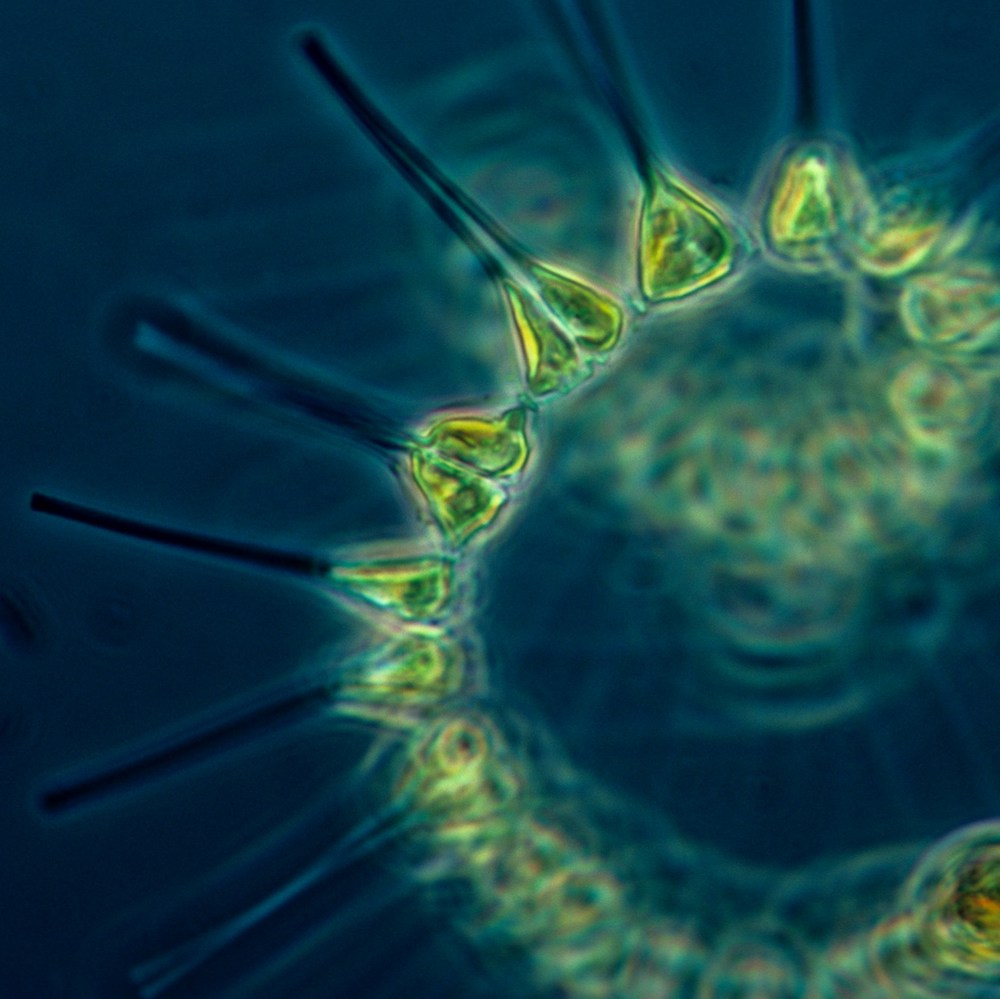
PORIA (Fu Ling) Mushroom: Boosts Digestion, Balance Energy, Support Spleen
There are herbs and mushrooms that make waves in the

Kick-start, energise, rejuvenate
All carefully planned and prepared to help nourish, reset and rejuvenate the body and mind.

Exploring the Nutritional Powerhouses of the Ocean: Algae and Phytoplankton
Marine plants, commonly known as sea vegetables, are among Earth’s oldest and most powerful nutritious plants. These remarkable organisms, including marine algae and seaweed, are abundant across the globe. Often referred to as macroalgae, they possess root-like rhizoids, stem-like stripes, and leaf-like structures, contributing to their unique appearance and functionality.
The Role of Algae in Marine Ecosystems
Seaweeds and algae are foundational components of marine ecosystems, forming the basis of a complex food web. These marine plants are consumed by fish, molluscs, and crustaceans, which are then preyed upon by larger animals. Beyond their role as a food source, seaweeds convert sunlight and dissolved nutrients into energy-rich organic compounds vital for the sustenance of other organisms. They also produce oxygen, essential for the survival of all marine animals, and offer shelter and protection for numerous species.
Sea Vegetables: A Culinary and Medicinal Resource
When edible, seaweeds are often referred to as sea vegetables. Humans have long utilised these sea plants for various purposes, including food, medicine, body care products, animal feed, and agricultural fertiliser. Sea vegetables are classified into three main groups: red, green, and brown. Red seaweeds, the most challenging to identify, can appear in various colours depending on their environment. Brown seaweeds maintain a consistent brown hue, while green seaweeds are typically bright green unless bleached by the sun.
Diverse Types of Algae
Seaweeds are classified into several groups or phyla based on pigmentation and other characteristics. Green algae (Phylum Chlorophyta) are known for their bright green colour, as other pigments do not obscure their chlorophyll pigment.
Brown algae (Phylum Phaeophyta) exhibit brown due to the abundance of pigments that mask the green chlorophyll.
Red algae (Phylum Rhodophyta) are distinguished by their red appearance, which is due to the red pigment phycoerythrin and the blue pigment phycocyanin. Under high light conditions, these algae can become bleached to a brown or straw colour.
Microalgae, including yellow-green algae (Phylum Xanthophyta) and blue-green algae (Phylum Cyanophyta), also play a significant role in marine environments. Diatoms (Phylum Bacillariophyta) are microscopic algae with silica-walled, pillbox-shaped cells, each half known as a valve.
Sea Grasses: The Underwater Meadows of the Ocean
Seagrasses, often mistaken for true grasses due to their ribbon-like leaves with visible veins, are fascinating marine plants belonging to the Magnoliophyta division. Despite their name, seagrasses are not true grasses but rather flowering plants adapted to the marine environment.
The Role of Sea Grasses in Marine Ecosystems
Seagrasses play a crucial role in marine ecosystems by forming extensive beds or underwater meadows. These lush expanses are vital for stabilising unconsolidated surfaces, such as sandy seabeds, preventing erosion and maintaining the integrity of coastal environments. Their root systems help to bind the sediment, reducing the impact of ocean currents and waves.
Nursery Grounds and Food Sources
These underwater meadows serve as important nursery grounds for a variety of marine animals. Young fish and invertebrates find shelter and protection among the dense leaves, making seagrass beds critical for the early stages of their life cycles. Additionally, sea grasses are a significant food source for marine herbivores, including manatees, sea turtles, and numerous species of fish. By supporting a diverse array of marine life, seagrass meadows contribute significantly to the biodiversity of oceanic ecosystems.
Seaweeds, often mischaracterised as weeds, are actually large marine algae that thrive in the coastal waters of many countries. This diverse group encompasses thousands of species, ranging from microscopic phytoplankton to large plants that float or anchor themselves in the ocean, often seen washed up along the seashore.
A Staple in Coastal Diets
For centuries, seaweeds have been an integral part of the traditional diets of coastal cultures, including those in Japan, Korea, China, Iceland, Sweden, Wales, Scotland, Hawaii, and the South Pacific islands. Many Asian cultures attribute their long life spans and robust health to the regular consumption of sea vegetables.
Health Benefits and Therapeutic Uses
Research has highlighted the remarkable health benefits of sea plants and algae for both humans and animals. These marine wonders have demonstrated curative properties for conditions such as tuberculosis, arthritis, colds, influenza, and parasitic infestations. Like those containing kainic acid, certain sea plants are effective vermifugal agents. The electrolytic magnetic action of sea plants is believed to help release excess body fluids from congested cells, eliminate fatty wastes through the skin, and replenish essential minerals, especially iodine and phosphorus.
Nutritional Powerhouse
Sea vegetables are renowned for their detoxifying properties, balanced nourishment, and healing capabilities. They are considered one of the richest natural sources of minerals, trace elements, and rare earth elements. Seaweed consumption is linked to lower obesity rates among Polynesians and other populations that regularly include it in their diets.
Protection Against Environmental Hazards
Sea vegetables offer protective benefits against radiation and environmental pollutants, preventing the assimilation of radionuclides, heavy metals, and other toxins. They are virtually fat-free, low in calories, and among the richest sources of minerals in the vegetable kingdom due to their access to the ocean’s abundant minerals.
Nutrient-Rich Composition
Sea vegetables are packed with high calcium, phosphorus, magnesium, iron, iodine, and sodium levels. They also provide vitamins A, B, C, and E, protein, and carbohydrates. Compared to terrestrial plants, sea vegetables contain 10 to 20 times higher vitamin content, making them a powerhouse of nutrition.
Planktons are a diverse group of tiny organisms found in open water, encompassing plants, animals, and bacteria. They range in size from microscopic bacteria and plants to larger animals like jellyfish. Typically, planktons lack swimming ability and are carried by water currents and tides. Based on their size, planktons are categorised into three major groups: phytoplankton (microscopic plants and bacteria), zooplankton (microscopic animals), and macro-zooplankton, which include larger entities like fish eggs, larvae, and pelagic invertebrates.
Indicators of Environmental and Aquatic Health
Planktons serve as vital indicators of environmental and aquatic health due to their sensitivity to environmental changes and short life spans. Phytoplankton is particularly useful in indicating high nutrient conditions, as they multiply rapidly when favourable conditions are favourable. Zooplankton, on the other hand, are crucial for predicting the health of future fisheries, as they provide a food source for higher trophic level organisms such as finfish. The most significant growth occurs during the “spring bloom,” when many phytoplankton species flourish due to optimal environmental conditions.
Nutritional and Health Benefits
Planktons have an alkaline pH, which counteracts the acidity prevalent in modern diets high in refined sugars and processed foods. The dense nutrient content found in algae is essential for maintaining the structure and function of human cell membranes, crucial for cell detoxification and overall metabolism. Diseases are often linked to disruptions in cell membrane function, including inflammation, oxidation, toxicity, and mitochondrial dysfunction. Algae, rich in antioxidants and anti-inflammatory micronutrients, support metabolism and detoxification while fueling the mitochondria, the energy-producing centres of cells.
The Foundation of Life on Earth
Planktons are responsible for supplying approximately 90% of the Earth’s oxygen, forming the foundation of all life forms. These microscopic oceanic plants are an excellent source of rare minerals and elements, providing essential nutrients such as electrolytes, amino acids, glyconutrients, omega-3 and omega-6 fatty acids, micronutrients, and a range of vitamins including A, B1, B2, B3, B5, B12, C, D, K, and E. They also supply vital minerals like potassium and iodine, making them indispensable to ecological and human health.
Marine phytoplankton are essential plant organisms that inhabit the ocean, primarily existing as microscopic floating plants. These remarkable organisms harness energy through photosynthesis, playing a foundational role in the marine food chain. With a diverse range of species, each phytoplankton possesses a unique shape and collectively thrives in oceans worldwide. They serve as a crucial food source for small fish and certain whale species, which in turn are consumed by larger fish, ultimately making their way into the human diet.
Phytoplankton are excellent indicators of environmental changes due to their dependence on specific growth conditions. Their global influence on climate makes them a focal point for oceanographers and Earth scientists. The term “phyto” means plant, while “plankton” refers to floating or suspended organisms. NASA scientists propose that approximately three and a half billion years ago, the emergence of these tiny organisms, capable of converting sunlight, warmth, water, and minerals into essential nutrients, marked the dawn of life. As single-celled plants, phytoplankton form the basis of all life on Earth and constitute the ocean’s vegetation.
Nutritional Powerhouses
Marine phytoplankton are rich in nutrients, including essential amino acids, vitamin C, and B group vitamins. These water-soluble nutrients must be consumed daily, as they are not stored in the body like fat-soluble nutrients. Phytoplankton provide an unparalleled source of essential nutrients, offering healing and preventative benefits through their nutritive and detoxifying properties. Unlike commercially grown produce, which often lacks vital nutrients, phytoplankton provides a comprehensive nutrient profile that supports superior health and aids in healing severe diseases. They are particularly beneficial for those whose diets do not primarily consist of organically grown, unprocessed raw foods, but even individuals with excellent dietary habits can experience significant health benefits.
Health Benefits and Alkalinity
Phytoplankton supports detoxification, enhances natural immunity, and can alleviate mood disorders, including depression. The chlorophyll present in these sea vegetables aids in the assimilation of amino acids. Of the 20 amino acids, the human body can synthesise only 10, necessitating the acquisition of the remaining 10 through diet. A deficiency in any of these amino acids can adversely affect protein synthesis and muscle health.
Phytoplankton offer a complex and varied nutritional profile that is unmatched by land-grown foods, making them a true superfood. In modern diets dominated by processed foods, phytoplankton can help counteract malnutrition-related diseases when combined with natural foods.
Balancing pH Levels
Most natural raw foods are alkaline, while cooked or highly processed foods tend to make the body more acidic. Phytoplankton’s alkaline pH contributes to overall health by counteracting the high acidity levels that predispose individuals to various diseases. Maintaining a body pH between 7.35 and 7.45 is crucial, with the ideal human blood pH being 7.4. Levels above 7.8 or below 6.8 are incompatible with survival, highlighting the importance of phytoplankton in maintaining a balanced pH.
Glyconutrients: The Essential Communicators in Our Bodies
Marine phytoplankton is a rich source of glyconutrients, essential compounds that play a vital role in facilitating effective cell-to-cell communication. These glyconutrients work through a complex system of messages involving well-known molecules such as hormones, neurotransmitters, and enzymes. Together, they form an intricate network of communication that ideally should not be isolated into separate components.
This interconnected system is known as the Psycho-Neuro-Immune-Endocrine (PNIE) system, which is crucial for coordinating our metabolism. In cutting-edge research, this system is now recognised as the cornerstone of health and function, highlighting the importance of maintaining robust communication pathways within our bodies.
Glyconutrients contribute to this system by ensuring that cells can effectively communicate and respond to each other, a process that is fundamental to overall health and well-being. By supporting the PNIE system, glyconutrients help regulate various bodily functions, contributing to a balanced and harmonious internal environment.
The Healing Benefits of Glyconutrients in Marine Phytoplankton
According to Dr. Jerry Tennant, M.D., marine phytoplankton has demonstrated remarkable results in the healing process. Beyond providing exceptional nutrition, phytoplankton is a powerful food source that protects against heavy metals and toxic chemicals in our environment, food, and water. This unique ability to enhance both cell metabolism and detoxification is crucial for maintaining optimal health.
Detoxification and Nutritional Support
Phytoplankton’s ability to aid in human detoxification while ensuring superior nutrition parallels the approach of many naturopathic physicians who focus on preventative medicine and natural treatments to combat diseases. In modern society, toxicity and inadequate nutrition are two primary causes of disease. Dietary phytoplankton can significantly reduce and even eliminate these issues, promoting overall well-being.
Strengthening Natural Immunity
Natural immunity, derived from a wholesome diet, lifestyle, and toxin elimination, can become compromised by toxins, stress, insufficient sleep, and poor nutrition. Phytoplankton helps restore and strengthen natural immunity by addressing these factors, reducing the risk of impaired immunity and associated diseases. Additionally, health issues can arise from hormones and unclean fodder added to dairy and meat animals, leading to diseases like tuberculosis. Phytoplankton’s detoxifying properties can help mitigate these risks by supporting a cleaner, more balanced internal environment.
Much like terrestrial plants, phytoplankton uses photosynthesis to create six-carbon compounds, which are vital for supporting higher trophic levels in the food chain. The growth of phytoplankton is primarily influenced by environmental factors such as temperature, light, and nutrient availability. Typically, phytoplankton thrives in the photic zone, the upper layer of water where sunlight can penetrate.
Majour groups of phytoplankton include the followings:
x Diatoms (phylum Bacillariophyta)
x Golden brown algae (Chrysophyta)
x Green algae (Chlorophyta)
x Blue green algae (Cyanophyta)
x Dinoflagellates (Pyrrophycophyta)
x Cryptomonads (Cryptophyta)
x Microflagellates (Prasinophyta, Euglenophyta and Protozoa)
Algae are fascinating organisms that come in two main types: Prokaryotes, which are unicellular organisms without a nucleus, such as blue-green algae like Spirulina, and Eukaryotes, which are unicellular organisms with a nucleus, including green and red algae. Chlorella is an example of green algae. Larger algae, known as seaweed, include well-known varieties like kelp.
The high density of nutrients in algae is crucial for maintaining human cell membrane structure and function, which is vital for cell detoxification and overall metabolism. Diseases often stem from issues related to cell membrane function, with inflammation, oxidation, toxicity, and mitochondrial dysfunction disrupting their roles. Algae are rich in antioxidants and anti-inflammatory micronutrients, supporting metabolism and detoxification by fueling the mitochondria, the cellular energy centres.
Photosynthesis allows algae to harness solar energy, making them highly beneficial. Algae enhance cell membrane function and provide prebiotic fibres that nourish intestinal flora. These fibres are crucial for the immunologic, neurologic, and hormonal systems, which communicate through cell membranes.
Iodine, essential for cell functions, particularly thyroid health, is abundant in algae and marine phytoplankton. The absence of iodine is linked to health issues, especially thyroid function, impacting brain health. Populations near oceans, with diets rich in algae and fish, are generally healthier and live longer due to their high iodine content.
Marine phytoplankton, microscopic oceanic organisms, are packed with micronutrients and electrolytes essential for cell metabolism. They contain all essential amino acids, omega-3 and omega-6 fatty acids, and various vitamins and minerals necessary for life and rebuilding healthy cells.
Due to its rich content of polysaccharides and other beneficial compounds, phytoplankton can help alleviate depression, stress, and mood swings. Its alkaline pH counteracts the acidity of modern diets high in refined sugars and processed foods.
Kelp, scientifically known as Ascophyllum nodosum, is a unique type of seaweed that thrives exclusively along the North Atlantic coasts of North America and Europe. It is particularly abundant on the North Atlantic coast of Canada, where the world’s largest tides continuously replenish the cold, clean environment. Commonly referred to as rockweed or seaweed, kelp is one of the richest marine plants, particularly valued for animal feed and agricultural use.
Historical and Medicinal Uses
Kelp has been a favoured vegetable source among ancient maritime cultures, including the Japanese, Chinese, South Sea Islanders, and Greenland Eskimos. Historically, kelp was first used medicinally to treat enlarged thyroid glands. Its effectiveness was later attributed to its exceptional iodine content, as iodine deficiency was identified as a cause of thyroid enlargement. Iodine stimulates the thyroid gland, which regulates metabolism, leading to observations that iodine intake could aid weight loss. Kelp’s positive effects on metabolism have also been suggested to help lower cholesterol levels.
Versatile Health Benefits
This versatile seaweed is also used to maintain healthy skin and hair. One of its most dramatic applications is its ability to neutralise heavy metal pollution and radiation in the body. Brown seaweed like kelp contains alginic acid, which binds toxins in the intestine, rendering them indigestible and facilitating their elimination from the system. Sodium alginate, an active ingredient in kelp, can prevent the absorption of newly ingested heavy metals, although it has limited effects on past exposures.
Nutritional Powerhouse
Kelp is a nutritional powerhouse containing over 60 mineral elements, 21 amino acids, both simple and complex carbohydrates, and several plant growth factors. Its rich composition makes it a great promoter of glandular health, benefiting the pituitary, adrenal, and thyroid glands. Since the thyroid and pituitary glands regulate certain digestive functions, kelp is beneficial in balancing both human and animal systems. Additionally, vitamin K, a fat-soluble vitamin found in kelp, aids in adrenaline regulation.
Kelp is also useful in preventing various health issues, including congenital disabilities, dropsy, oedema, fatigue, goitre, and low blood pressure.
Spirulina, a type of blue-green algae belonging to the Cyanophyta phylum, is celebrated for its exceptional nutritional profile and health benefits. Rich in chlorophyll and disease-fighting compounds known as phytochemicals, Spirulina offers a natural defence against cellular damage caused by free radicals. These phytochemicals, which give plants and fruits their vibrant colours, play a crucial role in protecting against various diseases, including certain types of cancer.
Cancer Prevention and Treatment
One of the notable health benefits of Spirulina is its potential for cancer prevention and treatment. It is particularly abundant in beta-carotene, a phytochemical known for its protective effects against mouth cancer. Spirulina has shown effectiveness in treating leukoplakia, a precancerous lesion in the mouth, highlighting its potential as a natural therapeutic agent.
Amino Acid and Protein Powerhouse
Spirulina is a powerhouse of amino acids, comprising 62% of its content. It offers 20 times more protein than soy and 200 times more than beef, making it an excellent protein source, especially for vegetarians and vegans. Additionally, Spirulina is the richest source of vitamin B12 and contains significant essential minerals like zinc, supporting various bodily functions and overall health.
Rich in Carotenoids and Omega-3
Spirulina contains 10 times more carotenoids than carrots and is rich in xanthophyll pigments, including chlorophyll. These compounds contribute to its antioxidant properties, which help combat oxidative stress in the body. Moreover, Spirulina boasts higher omega-3 content than fish oil, providing essential fatty acids that support heart health and cognitive function.
A Historical Superfood
Known as a “wonder food,” Spirulina was a staple in the diet of the ancient Aztec civilisation, revered for its nutrient density and health benefits. It is packed with scientifically proven phytonutrients, antioxidants, and functional nutrients to enhance health and well-being.
Health Benefits and Applications
Spirulina’s rich composition of polymeric and basic sugars, such as polysaccharides, further enhances its nutritional value. These sugars support immune function and energy levels. As a versatile superfood, Spirulina can be incorporated into various dietary regimens to promote overall health, prevent nutrient deficiencies, and prevent disease.
Chlorella is a type of green algae known for its impressive array of health benefits, particularly its ability to aid in mercury elimination. This potent algae owes much of its beneficial effects to its high concentration of chlorophyll and beta-carotene and its unique cell wall structure. The cell wall of Chlorella effectively binds with heavy metals and pesticides, facilitating their safe removal from the body.
Detoxification and Immune Support
One of the standout features of Chlorella is its role in detoxification. Its cell wall acts as a natural chelator, binding to toxins and heavy metals like mercury and helping to eliminate them from the body, making Chlorella a popular choice for detoxification protocols.
In addition to detoxification, Chlorella contains a unique growth factor known as the Chlorella Growth Factor (CGF). This growth factor is believed to enhance immunity by boosting the activity of T-cells and B-cells, which are crucial for defending the body against viruses. CGF also improves the function of macrophages, the immune cells responsible for engulfing and destroying viruses and other foreign invaders.
Nucleic Acids and Cellular Health
Discovered in the 1950s, the Chlorella Growth Factor indicates the nucleic acids in Chlorella, namely RNA and DNA. These nucleic acids are vital for directing cell growth and repair, but their levels decline with age and are further depleted by stress, pollution, and poor diet. Chlorella is sometimes referred to as a “green blood tonic and cleanser,” it has been reported to be beneficial in cases of anaemia. It stimulates tissue regeneration, accelerates wound healing, and may inhibit the growth of some tumours.
Potential Health Benefits
Chlorella is also thought to help prevent degenerative diseases and slow down the ageing process. Its potential in treating cancer, Acquired Immunodeficiency Syndrome (AIDS), Epstein-Barr disease, and other chronic viral illnesses is being explored. Additionally, Chlorella has been found to have radio-protective effects against gamma rays, offering protection against radiation.
Nutritional Profile and Applications
Chlorella is a nutritional powerhouse, rich in vitamins, minerals, and antioxidants. It supports overall health and well-being and is often used as a dietary supplement to enhance nutrition, support detoxification, and boost immune function. Its potential to promote cellular health and protect against various environmental and biological stressors makes it a valuable addition to a health-conscious lifestyle.
ALGAE NUTRITIONAL PROPERTIES
Macro and Micro Elements
Vitamins
Amino Acids
Essential Fatty Acids
Pigments
Others

There are herbs and mushrooms that make waves in the

Few herbs are as revered in Traditional Chinese Medicine (TCM)

For centuries, He Shou Wu (何首乌), also known as Fo-Ti
Copyright Shoku Iku © 2024 | All Rights Reserved.
The statements on this website have not been evaluated by the TGA or FDA. These products are not intended to diagnose, treat, cure or prevent any disease.
Sign up to receive your discount.